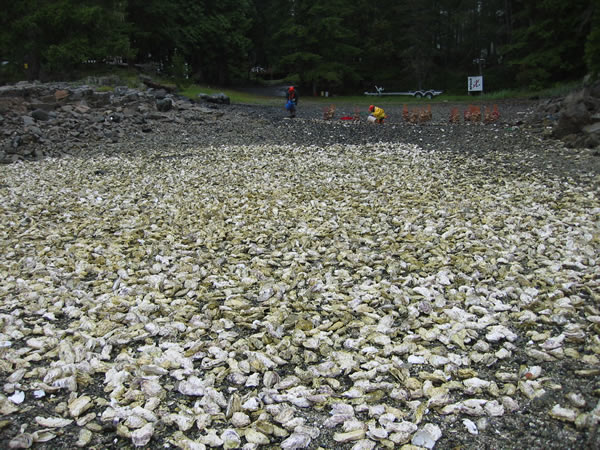
Large oysters grown on the bottom for specialty markets and for the meat trade. These oysters have been gathered near shore for sorting and packing. (photograph by Dr. René E. LAVOIE, Bedford Institute of Oceanography) 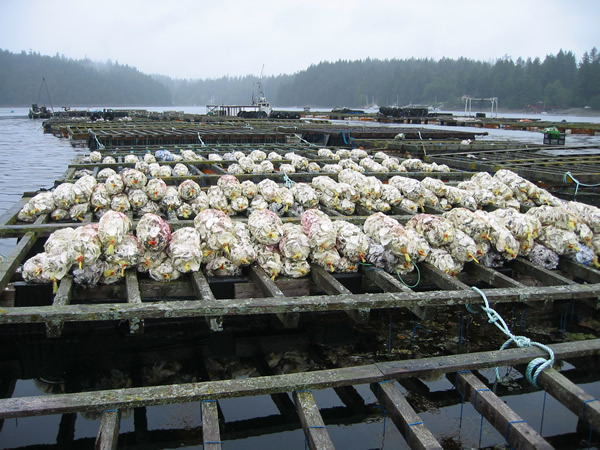
Raft culture operation on Cortes Island. Oysters are collected on shell bags seen on top of the rafts and grown to market size in suspension. (photograph by Dr. René E. LAVOIE, Bedford Institute of Oceanography) 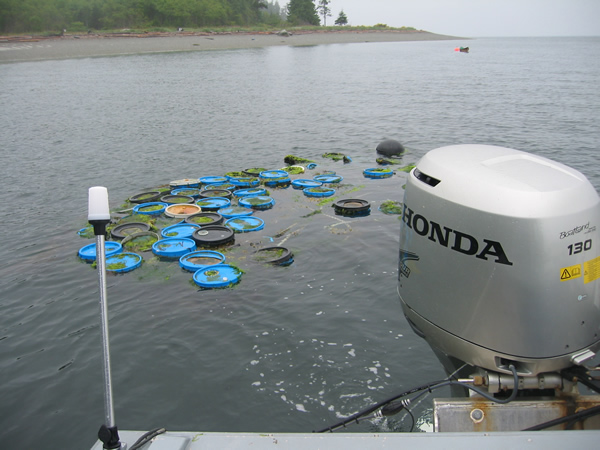
Small scale seed growing operation. Seed is grown in upwellers made of 5 gallon buckets with a mesh bottom and foam floatation under the cover. (photograph by Dr. René E. LAVOIE, Bedford Institute of Oceanography) 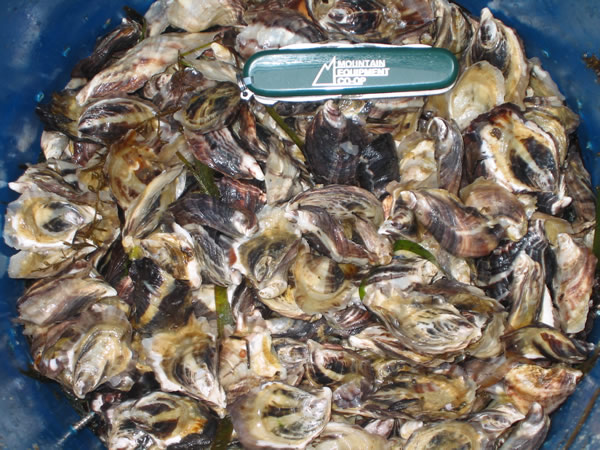
Seed produced using the floating bucket method. (photograph by Dr. René E. LAVOIE, Bedford Institute of Oceanography) 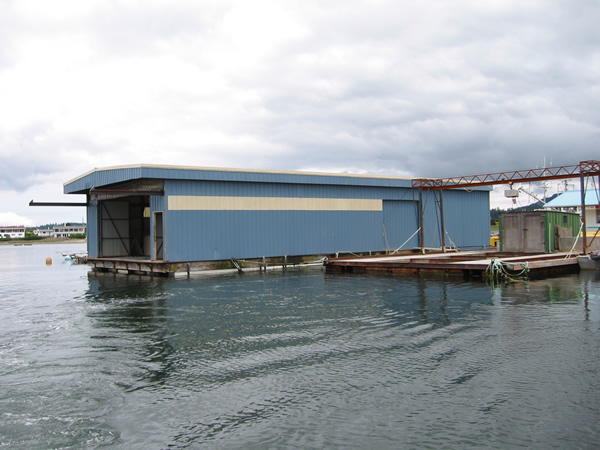
Large scale seed growing facility called Flupsy. Seed is grown in bottom meshed pens. Water flow is accelerated by a large paddle wheel. (photograph by Dr. René E. LAVOIE, Bedford Institute of Oceanography) 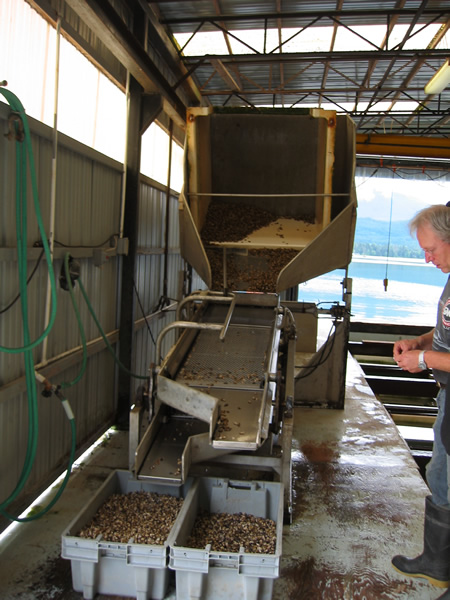
Mechanical seed sorter to grade oyster seed by size. This is operated from within the Flupsy building. (photograph by Dr. René E. LAVOIE, Bedford Institute of Oceanography) 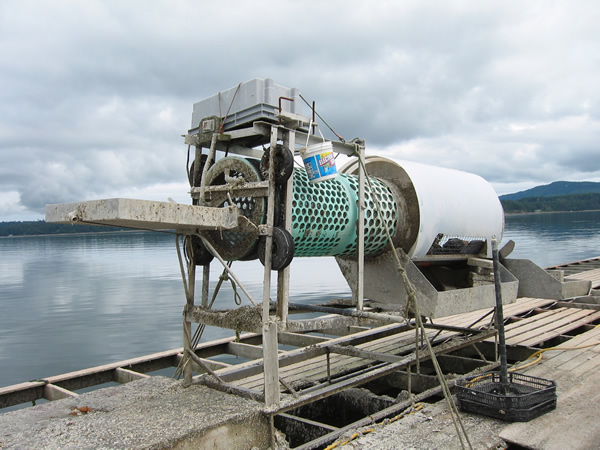
Mechanical oyster tumbler. Oysters are tumbled in rotating drums to break off new growth to produce the deep-cup shells favored by the half-shell trade. (photograph by Dr. René E. LAVOIE, Bedford Institute of Oceanography) 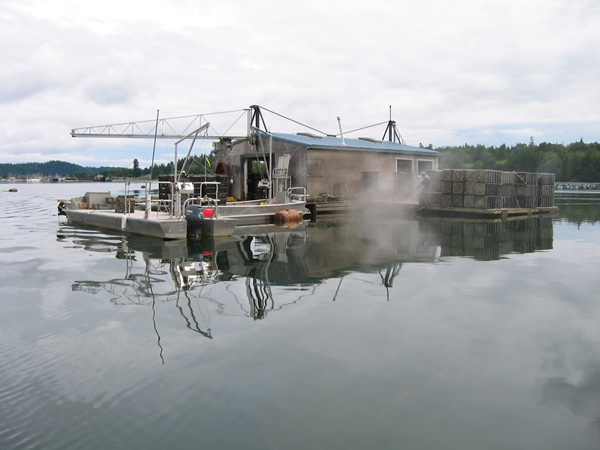
Floating oyster handling facility used to clean oyster growing trays, gear repair, and harvesting from the floating trays seen at the right of the picture. (photograph by Dr. René E. LAVOIE, Bedford Institute of Oceanography)
Photos:Dr. René E. LAVOIE, Bedford Institute of Oceanography